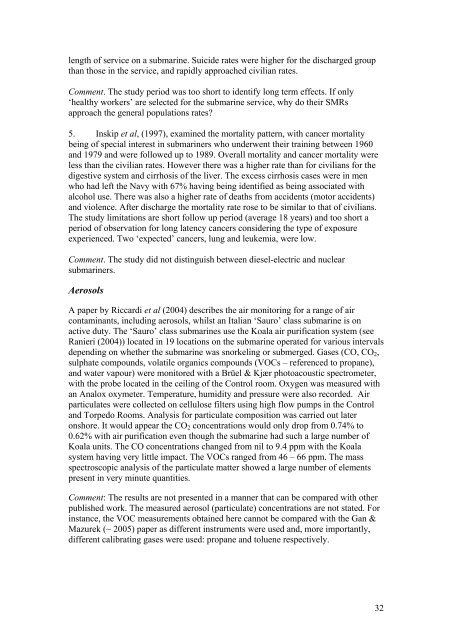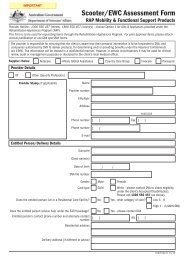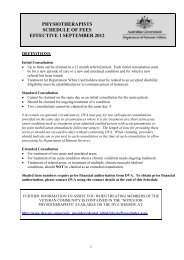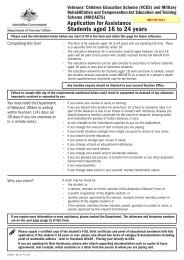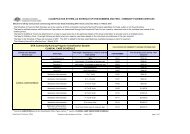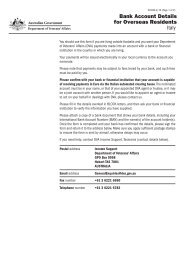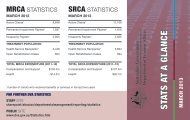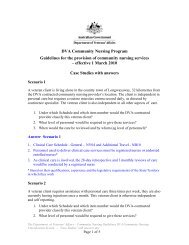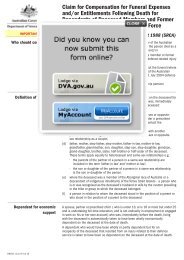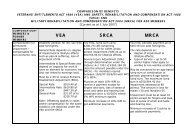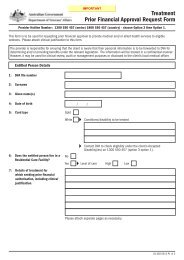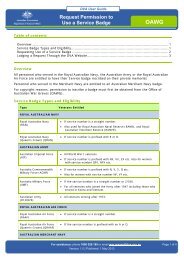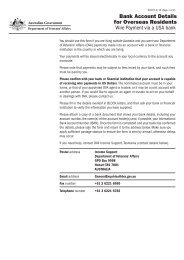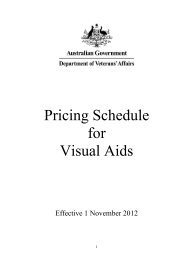length of service on a submarine. Suicide rates were higher for the discharged groupthan those in the service, and rapidly approached civilian rates.Comment. The study period was too short to identify long term effects. If only‘healthy workers’ are selected for the submarine service, why do their SMRsapproach the general populations rates?5. Inskip et al, (1997), examined the mortality pattern, with cancer mortalitybeing of special interest in submariners who underwent their training between 1960and 1979 and were followed up to 1989. Overall mortality and cancer mortality wereless than the civilian rates. However there was a higher rate than for civilians for thedigestive system and cirrhosis of the liver. The excess cirrhosis cases were in menwho had left the Navy with 67% having being identified as being associated withalcohol use. There was also a higher rate of deaths from accidents (motor accidents)and violence. After discharge the mortality rate rose to be similar to that of civilians.The study limitations are short follow up period (average 18 years) and too short aperiod of observation for long latency cancers considering the type of exposureexperienced. Two ‘expected’ cancers, lung and leukemia, were low.Comment. The study did not distinguish between diesel-electric and nuclearsubmariners.AerosolsA paper by Riccardi et al (2004) describes the air monitoring for a range of aircontaminants, including aerosols, whilst an Italian ‘Sauro’ class submarine is onactive duty. The ‘Sauro’ class submarines use the Koala air purification system (seeRanieri (2004)) located in 19 locations on the submarine operated for various intervalsdepending on whether the submarine was snorkeling or submerged. Gases (CO, CO 2 ,sulphate compounds, volatile organics compounds (VOCs – referenced to propane),and water vapour) were monitored with a Brüel & Kjær photoacoustic spectrometer,with the probe located in the ceiling of the Control room. Oxygen was measured withan Analox oxymeter. Temperature, humidity and pressure were also recorded. Airparticulates were collected on cellulose filters using high flow pumps in the Controland Torpedo Rooms. Analysis for particulate composition was carried out lateronshore. It would appear the CO 2 concentrations would only drop from 0.74% to0.62% with air purification even though the submarine had such a large number ofKoala units. The CO concentrations changed from nil to 9.4 ppm with the Koalasystem having very little impact. The VOCs ranged from 46 – 66 ppm. The massspectroscopic analysis of the particulate matter showed a large number of elementspresent in very minute quantities.Comment: The results are not presented in a manner that can be compared with otherpublished work. The measured aerosol (particulate) concentrations are not stated. Forinstance, the VOC measurements obtained here cannot be compared with the Gan &Mazurek (~ 2005) paper as different instruments were used and, more importantly,different calibrating gases were used: propane and toluene respectively.32
Air Quality Standards1. In his brief paper, Raffaelli (1989) recounts a little of the history of settingexposure limits for submariners in the UK. As in the USA, the values used were basedon the ACGIH (American Conference of Governmental Industrial Hygienists)Threshold Limit Values (TLVs) which are based on a time weighted averageconcentration (TWA) for an 8 hour day, 40 hour week, with time to allow forrecovery of the in-taken contaminants between daily exposures. In 1987 the UKHealth & Safety Executive introduced the concept of <strong>Occupational</strong> Exposure Limits(OELs - health based) and Control Limits or Maximum Exposure Limits (MELs - bestpractice), with the latter being influential for the Royal Navy in its process for settinglimits. Owing to the differences in the submerged environment compared with that ofa normal workplace, separate limits, Maximum Permissible Concentrations (MPCs)are set by the Institute of Naval Medicine and endorsed by Royal Naval PersonnelResearch Committee of the Medical Research Council. These were based on currentavailable scientific evidence supplemented by experimental studies if necessary. Theyare set as ceiling values, and for a small number of substances there are TWAs.Ceiling values in the occupational health field mean the value should not be exceeded.The definition of a MPC 90 for an atmospheric contaminant is:“that atmospheric concentration which, for continuous exposure for 90 days in aclosed environmental system, neither causes nor contributes to ill-health in the shortor long term, nor to lasting detectable functional shifts that would lower efficiency ofperformance to a level hindering fulfillment of prescribed activities of the system oroccupants.”MPC have been set for 24 hours and 60 minutes. UK submarines have MPCs for 23substances that are monitored in real time, 15 measured retrospectively (taken back tolaboratory for analysis), and 19 that have been set as design specifications formachinery.In the discussion the author also commented that it was coincidental that many of thevalues set were one-fifth of the occupational values and the lack of recovery time asextremely important in the derivation.The compounds for which MPC had been set were acetonitrile, benzene,ethylbenzene, hydrazine, methanol, toluene, 1,1,1-trichloroethane, vinyl chloride andxylene. On the intended list because they are present in significant quantities: 2-butoxy ethanol, 1,2-dibromoethane, carbon disulphide, carbon tetrachloride, 2-ethoxyethanol, 2-ethoxyethylacetate, n-hexane, hex-2-one, styrene and vinylidene chloride.Comment. Many of the compounds listed above are either solvents or are present asoff gassing products from plastic materials on board. Some of these would also havebeen present on the <strong>Oberon</strong> <strong>Class</strong> submarines.2. In his paper, Dean (1996) identified that the Royal Navy MaximumPermissible Concentration allowable for 90 day patrol (MPC90), allegedly a health33
- Page 1 and 2: Oberon Class SubmarineOccupational
- Page 3 and 4: ContentsExecutive Summary..........
- Page 7 and 8: There is strong anecdotal evidence
- Page 10: decommissioned) in 1992. The five r
- Page 13 and 14: Ventilation Arrangements(from Kane
- Page 15 and 16: Approach Adopted in this StudyIn or
- Page 17 and 18: Departmental DocumentsDefence Scien
- Page 19 and 20: of diesel-electric propulsion and a
- Page 21 and 22: 4. Gan & Mazurek (~ 2005), “Expos
- Page 23 and 24: to avoid short and long term effect
- Page 25 and 26: from the air vents, in excess of 65
- Page 27 and 28: Overseas Studies Relating to Oberon
- Page 29 and 30: For the compounds identified with *
- Page 31: pollution by 33%. There is a length
- Page 35 and 36: Continuous Exposure Guidance levels
- Page 37 and 38: ClothingStandard orders refer to th
- Page 39 and 40: occupational health exposure studie
- Page 41 and 42: Issues of body absorption of diesel
- Page 43 and 44: eading time is 10 minutes. The 0.2
- Page 45 and 46: Comment. This study is cited as the
- Page 47 and 48: • secrecy associated with submari
- Page 49 and 50: 3-methyl hexanedimethylcyclohexane1
- Page 51 and 52: - performance of tasks in cramped c
- Page 53: smoke candles ·torpedo 'hot runnin
- Page 56 and 57: The control room onONYX, looking af
- Page 58: Committee and the University of Que
- Page 61 and 62: Many references were made to a sens
- Page 63 and 64: safety was compromised for speed an
- Page 65 and 66: Health HazardsThe health hazards id
- Page 67 and 68: Psychological• Stress caused by n
- Page 69 and 70: Tar epoxiesJason pistols?berylliumE
- Page 71: Some of the psychological effects i
- Page 75 and 76: Table 3: Rank and job description b
- Page 77 and 78: Junior SailorsEngineeringTradespers
- Page 79 and 80: Seaman- maintainerelectricalLeading
- Page 81 and 82: Table 4: Exposure Profile and Quali
- Page 83 and 84:
DiscussionThis project appears to b
- Page 85 and 86:
in surface vessel engine rooms. The
- Page 87 and 88:
exceeded the guideline of 50 microg
- Page 89 and 90:
ConclusionIn conclusion, the occupa
- Page 91 and 92:
AnnexesAnnex A: The Project TeamAnn
- Page 93 and 94:
Annex B toOberon Class SubmarineOcc
- Page 95 and 96:
locked cabinets at CMVH and accesse
- Page 97 and 98:
THIS PAGE WILL BE DETACHED FROM YOU
- Page 99 and 100:
• What were the specific tasks co
- Page 101 and 102:
List of Documents not AvailableAnne
- Page 103 and 104:
ReferencesLiterature ReviewAdelson
- Page 105 and 106:
Gorman R., Liss G.M., (1985), “Oc
- Page 107 and 108:
McKinnery, W. N., Jr. and Moore, R.
- Page 109 and 110:
Aeronautical and Maritime Research
- Page 111:
111


